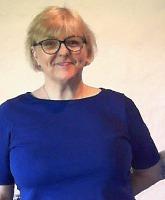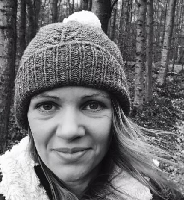Blog
Unless otherwise stated, content is shared under CC-BY-NC Licence
IDCC Session: Selecting efficient and reliable preservation strategies
Alexandra Mitchell is Archivist at the University of Salford. She attended IDCC 2020 with support from the DPC's Career Development Fund which is funded by DPC Supporters.
How do we choose what digital preservation strategy to use? When I was asked by the DPC to select a paper on which to write a blog post I naively thought I would come out of this with some answers. Instead, Micah Altman’s paper highlighted just how complex digital preservation can be and any approach taken by an institution or indeed individual must take a constellation of factors into consideration.
IDCC 2020: Do we need to agree on how to say potato?
Judith Carr is the Research Data Manager at the University of Liverpool. She attended IDCC 2020 with support from the DPC's Career Development Fund which is funded by DPC Supporters.
This is my second blog about the IDCC 2020 conference in Dublin.
Preserving UK Videogame History
Caylin Smith is the Digital Preservation Manager at Cambridge University Library.
If you were to think about the scale of complexity for preserving digital content, videogames would probably be at the higher end. This is exactly the challenge given to a group of UK-based collecting organisations: figuring out how to preserve and provide access to UK videogame history for current and future generations of researchers.
In January 2019, representatives from the British Film Institute, the V&A, the Science Museum Group, the British Library and the UK Legal Deposit Libraries, the Museum of London, and the National Videogame Museum met to discuss the first steps.
There ain't no party like an online digital preservation party
What do you do if Covid-19, travel bans and social distancing stops your planned DPC Australasia launch party taking place?
You take your party online of course!
So early (very early) this morning I got myself up, donned a sparkly top, grabbed a glass of orange juice and some cereal and logged on to a virtual party. I briefly toyed with the idea of bringing a glass of wine but regretfully decided it was a step too far at 7am.
Positive Outcomes of the N2N Pilot
Put your tray tables up and your seats in the upright position, because we are nearing the end of the N2N Project Pilot…
Work has continued at pace with the Novice to Know-How (N2N) Project (now officially renamed from Novice to Ninja) over the last few months. So far, the N2N team has commenced and completed Phase 1 (research and learning pathway design) and is deep into Phase 2 (content development).
IDCC Keynote: The Internet of Things
Alexandra Mitchell is Archivist at the University of Salford. She attended IDCC 2020 with support from the DPC's Career Development Fund which is funded by DPC Supporters.
Being a first-time attendee at the IDCC Conference I didn’t know quite what to expect. With my background and experience firmly rooted within archives, most of the conferences I have attended have tended to be dominated by the archive profession. The opportunity to attend the IDCC Conference thanks to the DPC Scholarship fund was not only a refreshing change but highlighted just how much we can learn from those working in other sectors on the management, preservation, access and use of digital content. The conference would prove to be an interesting and dynamic few days.
A day in the life of a Winter School for Audio-visual Archiving participant
Sally Cholewa is an Archivist at RBS. She attended AV Winter School 2020 with support from the DPC's Career Development Fund which is funded by DPC Supporters.
A day in the life of a Winter School for Audio-visual Archiving participant
IDCC 2020: Becoming the ‘new normal’ is a good thing, but it is going to take time
Judith Carr is the Research Data Manager at the University of Liverpool. She attended IDCC 2020 with support from the DPC's Career Development Fund which is funded by DPC Supporters.
First of all, I need to thank the Digital Preservation Coalition for giving me the opportunity to attend my first IDCC conference.
Despite the crazy weather, hail, rain, sunshine, thunder and wind, sometimes in the same afternoon (just Dublin weather apparently), I enjoyed the conference. There were many interesting talks and workshops.
IDCC Session: ‘Long-term data preservation data lifecycle, standardisation process, implementation and lessons learned’, Iolanda Maggio
Hannah Smith is Digital Archives Manager at Historic Environment Scotland. She attended IDCC 2020 with support from the DPC's Career Development Fund which is funded by DPC Supporters.
As part of my scholarship to attend the IDCC 2020 in Dublin, I was asked to write a blog post on the session ‘Long-term data preservation data lifecycle, standardisation process, implementation and lessons learned’ by Iolanda Maggio. The title of this session made me feel a little hesitant at my ability to follow the discussion, but it turned out to be one of the most relevant sessions to my own role and organisation.
Introducing the Levels of Born-Digital Access
By Brian Dietz (Digital Program Librarian for Special Collection, NC State University Libraries), Shira Peltzman (Digital Archivist, UCLA Library) and Jessica Venlet (Assistant University Archivist for Digital Records and Records Management, UNC at Chapel Hill University Libraries)
The decisions facing those who work with born-digital archival materials are myriad. While it has become increasingly easier to find technical processing workflows and lists of handy tools, documentation and guidance on exactly how to provide access to our born-digital collections has lagged behind in our collective conversations.




















































































































































